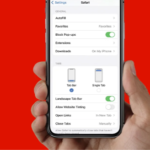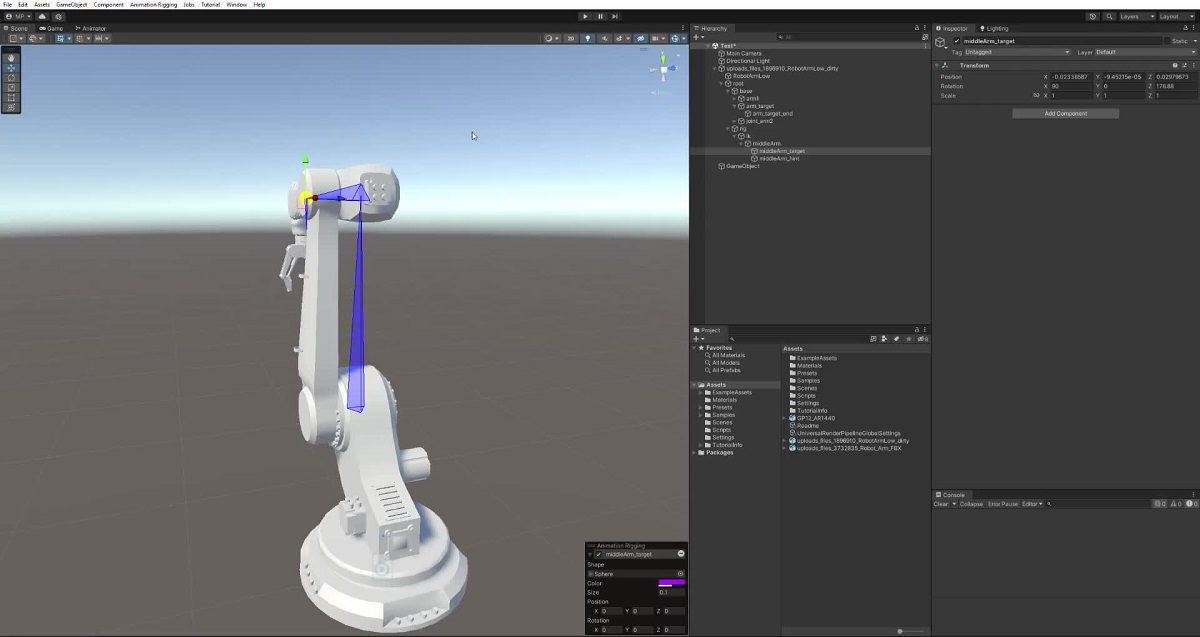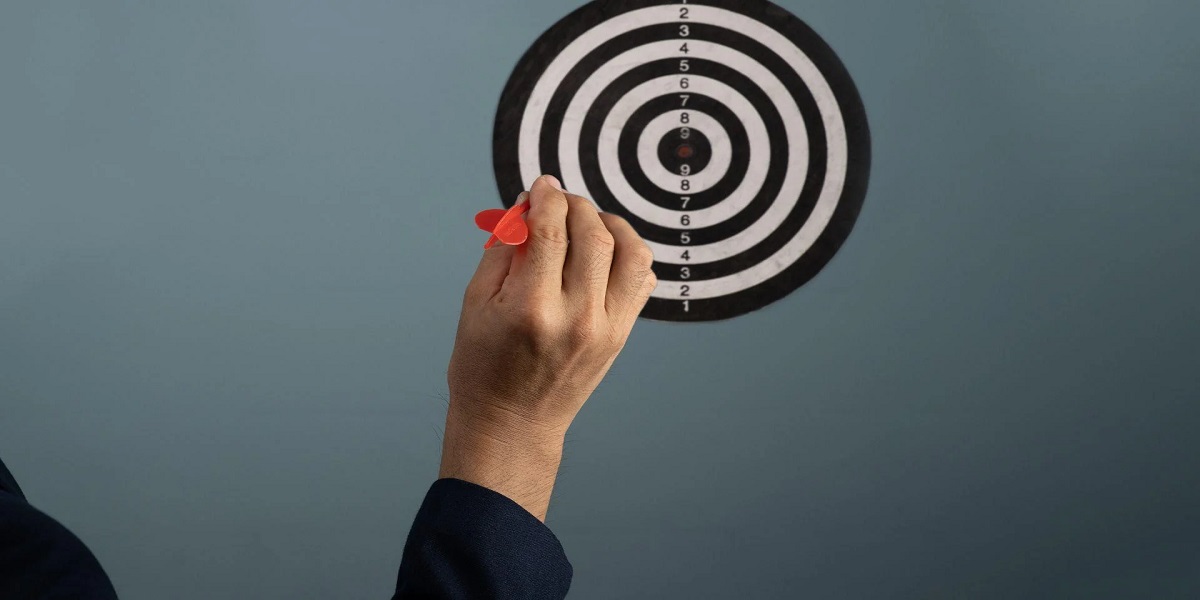Are you ready to embark on an exciting journey through the realm of animation rigging? Buckle up, because we’re about to delve into a world where creativity knows no bounds and imagination takes flight. In this blog post, we’re going to uncover the untapped potential of animation rigging, exploring how it has become the next frontier in unleashing boundless creativity. So whether you’re an aspiring animator seeking new techniques or simply someone curious about the magic behind your favorite animated characters’ movements, get ready to unlock a whole new dimension of possibilities as we dive headfirst into the captivating world of animation rigging!
Introduction to Animation Rigging
Animation rigging is a crucial aspect of the animation process that often goes unnoticed by viewers, but it plays a significant role in creating lifelike and believable character movements. In simple terms, animation rigging is the process of attaching digital controls to 3D models to manipulate their movements and behaviors.
Rigging is an essential step in the animation pipeline as it allows animators to focus on bringing characters and objects to life without having to worry about technical details. It provides them with a framework within which they can create complex animations with ease. Without proper rigging, even the most skilled animators would struggle to achieve realistic movements for their characters.
However, with advancements in technology and software development, modern animation rigs have become highly sophisticated and complex.
Types of Animation Rigs
There are various types of rigs that are used in different forms of animation such as 2D or 3D. Some common types include:
- Bone-based Rig: This type of rig uses a hierarchical system of interconnected bones that control the movement and deformation of a character’s body parts.
- Muscle-based Rig: As the name suggests, this type of rig focuses on simulating muscle movement for more realistic character animations.
- Facial Rig: A facial rig consists of specialized controls for manipulating a character’s facial expressions and emotions.
- Cloth Rig: This type of rig is used to animate cloth and fabric movements, such as a character’s clothing or a flag waving in the wind.
- Prop Rig: A prop rig is used to animate non-character objects, such as vehicles or machinery.
The specific type of rig used will depend on the needs and requirements of the animation project.
Rigging Tools
To create an animation rig, animators use specialized software tools that allow them to manipulate digital controls and set up complex systems for character movement. Some popular software programs used for animation rigging include Autodesk Maya, Blender, and Adobe Animate.
These tools provide a range of features and options for creating rigs, including IK (inverse kinematics) solvers, deformers, constraints, and more. They also offer various ways to customize and fine-tune the behavior of the rig based on the animator’s preferences.
Benefits of Animation Rigging
- Realism: With properly rigged characters and objects, animators can achieve more realistic movements that closely resemble those in real life.
- Time-saving: Rigging streamlines the animation process by providing ready-made controls that can be easily manipulated instead of animating every frame manually.
- Flexibility: Animation rigs can be customized and tweaked to achieve the desired movements, making them suitable for a wide range of animation styles.
- Consistency: With a rig in place, animators can ensure that characters’ movements remain consistent throughout the animation, helping to create a more polished end product.
Animation rigging is an essential aspect of the animation process that allows animators to bring their creations to life with realistic and believable movements. It requires skill and technical expertise, but with the right tools and techniques, animators can create captivating animations that captivate audiences.
Evolution of Animation Rigging in 3D Animation
The evolution of animation rigging in 3D animation has been a constantly evolving process, marked by significant advancements in technology and techniques. From the early days of hand-drawn animations to the current state-of-the-art computer-generated imagery (CGI), animators have been pushing the boundaries of creativity and realism through innovative rigging methods.
In its simplest form, animation rigging refers to the process of creating a digital skeleton for an animated character or object. This allows animators to manipulate and control movements, making them appear more natural and lifelike. The earlier forms of rigging involved manually manipulating every joint and limb of a character, which was labor-intensive and time-consuming.
However, with the advent of computer graphics in the late 20th century, new possibilities opened up for animators. They were now able to use advanced software tools to build rigs with pre-set controls that made it easier to manipulate characters’ movements. This not only saved time but also allowed for more intricate and complex animations.
Major Milestone
One major milestone in the evolution of animation rigging was the introduction of inverse kinematics (IK) in 3D animation software. IK is a mathematical algorithm that calculates movement based on predetermined constraints, such as joint rotation limits or length restrictions. This breakthrough technique gave animators more control over their characters’ movements, resulting in smoother and more realistic animations.
Another game-changing innovation in rigging was introduced by Pixar’s “Toy Story” in 1995 – skeletal deformation using blend shapes or morph targets. This technique allowed animators to create various facial expressions and body shapes by manipulating a set of predetermined blend shapes, making the animation process more efficient.
As technology progressed, so did rigging techniques. In 2001, Pixar introduced Subdivision Surface (SubD) rigging in their film “Monsters, Inc.” SubD rigging involves creating a low-resolution mesh and applying a smoothing algorithm to it, resulting in a smoother and more realistic surface for animators to work with.
Recent Advancements In Animation Rigging
More recent advancements in animation rigging include the use of physics simulations and motion capture technology. Physics simulations use real-world physics principles to create realistic movements for digital characters or objects. Motion capture involves recording real-life movements and translating them onto digital characters using specialized software and equipment.
Today, with the advancement of machine learning and artificial intelligence, animators are exploring new possibilities in rigging techniques. Some companies are already using AI algorithms to automatically generate rigs based on character designs, cutting down on the time and effort required for manual rigging.
As technology continues to advance, we can expect further developments in this field that will push the boundaries of what is possible in 3D animation.
Current Challenges in Animation Rigging
Animation rigging is a complex process that involves creating and manipulating digital skeletons, joints, and controls to bring characters to life. It is an essential part of the animation pipeline and plays a crucial role in achieving believable and expressive character movements. However, like any other technology, animation rigging also has its own set of challenges that animators face while working on projects.
1. Technical Complexity
One of the biggest challenges in animation rigging is its technical complexity. Creating a functional rig requires extensive knowledge of anatomy, physics, mathematics, scripting languages, and software tools such as Maya or Blender. It takes years of practice and experience to master these skills and create rigs that are efficient, scalable, and easy to use for animators.
Moreover, with advancements in technology comes new techniques and tools that animators need to constantly learn and adapt to stay relevant in the industry. This ever-evolving nature of animation rigging can make it difficult for beginners to enter the field or for experienced professionals to keep up with new trends.
2. Time-Consuming Process
Rigging a character can be a time-consuming process as it involves setting up numerous control points and constraints to achieve desired movements realistically. A simple character may take days or even weeks to rig properly depending on its complexity.
Furthermore, when changes are made during the animation process, it can be time-consuming to update the rig accordingly. This can result in delays in production and affect project timelines.
3. Limitations of Traditional Rigging Systems
Traditional rigging systems, such as FK (Forward Kinematics) and IK (Inverse Kinematics), have their own limitations that can hinder the quality of animation. For instance, while FK is great for basic movements, it can be challenging to achieve natural-looking poses and movements using this system.
On the other hand, IK allows animators to manipulate specific body parts while keeping others fixed, but it can result in unrealistic deformations when pushed too far. These limitations often require animators to use a combination of both systems or switch between them frequently during animation, which can be time-consuming and tedious.
4. Rig Maintenance and Updates
Once a character rig is created, it needs to be maintained and updated regularly throughout the animation process. This includes fixing any technical issues or bugs that may arise, updating the rig with new features or controls, or making changes to accommodate feedback from directors or clients.
This ongoing maintenance and updating process can be challenging for animators who have tight deadlines and limited resources. It requires a balance between efficiency and quality to ensure that rig updates do not affect project timelines or overall animation quality.
5. Compatibility Issues
Animation rigs are often created in a specific software or tool, and compatibility issues can arise when trying to transfer them to another platform. This is especially challenging for smaller animation studios that may not have access to expensive software licenses or specialized rigging tools.
Moreover, even if the rig is compatible, it may not function the same way on different platforms, resulting in discrepancies in the final animation. Such compatibility issues can be time-consuming to resolve and can delay project delivery.
The Role of Creativity in Overcoming these Challenges
The animation industry is constantly evolving, and with advancements in technology and software, the demand for high-quality and innovative animation continues to rise. However, this rapid growth also brings about new challenges that animators must face. In order to stay ahead of the curve and produce truly groundbreaking work, it is crucial for animators to tap into their creativity.
Creativity plays a pivotal role in overcoming the challenges faced by animators today. From pushing boundaries to finding solutions, here are some ways in which creativity can help overcome these challenges.
1. Pushing Boundaries:
In today’s competitive market, producing generic or cookie-cutter animations will not cut it anymore. Animators need to constantly push boundaries and think outside the box in order to stand out from the crowd. This is where creativity comes into play. By tapping into their imagination and exploring new techniques, animators can create unique visuals that capture the attention of audiences.
2. Finding Solutions:
Animation rigging is an intricate process that requires precise technical skills. Often times, riggers encounter complex problems that cannot be solved through traditional methods alone. Here, creativity becomes essential as it allows riggers to approach problems from different angles and come up with innovative solutions that may not have been thought of before.
3. Enhancing Storytelling:
At its core, animation is all about storytelling – creating characters and worlds that captivate viewers’ hearts and minds. In order to tell compelling stories through animation, creators must infuse their work with creative elements that bring their vision to life. This could mean experimenting with different animation techniques, exploring new visual styles, or incorporating unique sound design. By tapping into their creativity, animators can elevate the storytelling aspect of their work and create truly memorable experiences for their audience.
4. Adapting to New Technology:
As technology continues to advance at a rapid pace, animators must constantly adapt and learn new tools and software in order to stay relevant. This can be a daunting challenge for some, but by harnessing their creative thinking skills, animators can embrace new technology and find innovative ways to incorporate it into their work. This not only helps them stay ahead of the curve but also opens up endless possibilities for creating stunning animations.
Creativity is an essential ingredient in the world of animation, allowing artists to overcome challenges and produce work that is original, engaging, and visually stunning. By harnessing their imagination and pushing boundaries, animators can continue to deliver groundbreaking animations that captivate audiences worldwide.
Predictions for the Future of Animation Rigging
As technology continues to advance, the future of animation rigging is set to be an exciting and transformative one. With new tools and techniques constantly emerging, it’s clear that the possibilities for creating dynamic and lifelike animated characters are only going to expand in the years ahead.
One of the most significant predictions for the future of animation rigging is the use of artificial intelligence (AI). AI, animators can create more realistic movements and behaviors by training algorithms on real-life human motion data. This will not only save time but also allow for a greater level of detail and nuance in character movements.
Another Prediction
Another prediction is the integration of virtual reality (VR) into animation rigging workflows. VR technology enables animators to enter a virtual world where they can manipulate 3D models with their own body movements. This hands-on approach opens up a whole new level of creativity and control over character animations. It also allows for better visualization during the rigging process, leading to more precise and natural-looking results.
The rise of real-time rendering engines is also expected to have a significant impact on animation rigging. As these technologies become more advanced, real-time performance will improve, allowing animators to see their changes instantly rather than waiting for lengthy rendering times. Real-time rendering also provides greater flexibility in terms of making changes or experimenting with different rig setups, leading to faster iteration times and ultimately better quality animations.
Another trend that will shape the future of animation rigging is the increasing use of motion capture (mocap) technology. Mocap involves recording and tracking the movements of real people, which can then be applied to 3D characters. As mocap technology becomes more accessible and affordable, it will likely become a standard tool in the animation industry. This will allow for more realistic and lifelike character movements, as well as faster production times.
Conclusion:
In conclusion, it is clear that embracing creativity is essential for success in the field of animation rigging. Not only does it allow animators to create unique and engaging animations, but it also helps them overcome challenges and opens up new possibilities for the future. As the demand for high-quality animations continues to grow, embracing creativity will become even more important in order to stand out in this competitive industry.










